When you first begin learning piano, you will start an exciting journey of learning both a new instrument and a new language---the language of music. Musical language is not used in everyday life and can be confusing at first.
To help you out, this glossary of musical terms contains 110 common words that often appear in piano music.
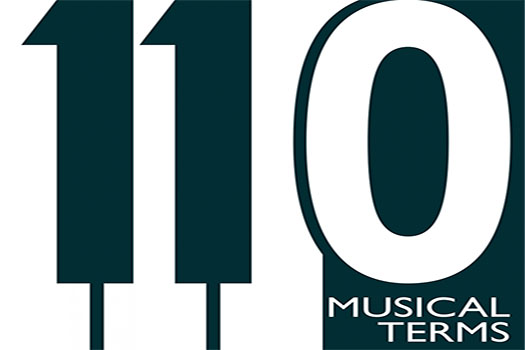
Many of the words are in Italian, the language that most composers use when giving directions in their pieces. As you learn piano, you will see these words more and more and become familiar with them. These terms are very important because they are messages from the composer to you, the performer, telling you the composer’s wishes and guiding you in how to play each piece.
Understanding these musical terms for piano will help you become the best musician that you can be. Don’t worry if you forget a term, you can always come back to this resource for guidance. Good luck with your piano studies, and happy playing!
Table of Content
GENERAL TERMS FOR MUSICAL CONCEPTS
Why Are These Terms Important?
These terms are the fundamental building blocks of all music. Music from every era and style is constructed using the elements these terms represent. Understanding these terms is an essential starting point for piano study. As you become a more advanced pianist, you will build on and expand your knowledge of these terms.
These terms are the fundamental building blocks of all music. Music from every era and style is constructed using the elements these terms represent. Understanding these terms is an essential starting point for piano study. As you become a more advanced pianist, you will build on and expand your knowledge of these terms.
- Melody: A tune or theme that you would sing along with; a group of single tones played one after the other that the listener hears as a complete unit or idea
- Harmony: A group of tones that is played underneath or around the melody to make it more interesting and give it a particular mood; Changing the harmony, even if the melody is the same, can create a completely different mood for the piece. For example, a new harmony can change the same melody from a happy mood to a sad one.
- Rhythm: The arrangement of tone lengths or tone duration over time; the flow of music through time
- Tempo: The speed (fast or slow) at which one is to play; usually indicated at the beginning of the music and whenever it should change
- Dynamics: The volume at which one is to play; the loudness or softness of a particular section or tone as indicated by “dynamic markings” (symbols on the sheet music)
- Articulation: The style in which tones or sections of pieces are played; Typically, articulation can be long or short, smooth or choppy, heavy or light and is indicated by symbols or with words (usually in Italian).
KEY & SCALES
Why Are These Terms Important?
Keys and major/minor systems play a big role in how a piece feels (for example, whether it is happy or sad) and knowing them will help you play in a more inspired way. Scales and arpeggios are some of the first things you’ll play as a new student; you’ll continue to play them and expand on them throughout your studies. They’re a great exercise for developing agile and quick fingers, and playing chords will strengthen your technique and stretch out your hands. Scales are also related to keys, harmony, and how a piece sounds, so understanding them will help you understand your solo pieces more quickly and at a deeper level.
MUSICAL FORM
Why Are These Terms Important?
Understanding form will allow you to learn a piece more quickly because you’ll be able to recognize ideas and sections that repeat themselves. You’ll also be able to play in a more informed way, and you’ll actually be able to convey the different sections of the piece to the listener which will make your performances that much more exciting!
- Form: The large-scale structure and organization of a piece of music
- Binary (AB) form: This form consists of 2 sections, an A section and a B section. Each section is different to the other section. Usually, each section is played twice (repeated) all the way through before going on to the next section.
- Ternary (ABA) form: This 3-part form consists of an A section which introduces the main melody. It is sometimes repeated before going on to the B section which features different material. After the B section, the A section returns to complete the piece; it is often written out immediately following the B section, or there may be symbols to direct you to simply return to the top of the piece and perform the opening A section again.
- Theme and Variations: This form has a main theme (melody) presented at the opening of the piece. After that, a series of variations are used to add a different character to the melody. For example, a different harmony might be added, rhythms might be changed, or a different articulation may be used to add variety. One of the most famous pieces that uses a theme and variations form is “Twinkle, Twinkle Little Star.” You can find these variations in the Suzuki books, and the Austrian composer Mozart also composed a series of variations on Twinkle.
MUSIC NOTATION: BASIC TERMS AND SYMBOLS
Why Are These Terms Important?
These are basic signs and symbols that you’ll find in music from all eras and styles. They’re your compass as you navigate through a piece. They tell you exactly how a piece goes (which pitches to play, etc.) and are essential for learning to read music well.
- Score: The formal name for the sheet music for a song or piece; professionals prefer this term
- Staff: A set of 5 horizontal lines and 4 spaces on which notes (tones) are placed; The lines are connected by a vertical line drawn at the left and right corners. Notes can be placed either on a line or in a space. A staff looks like this
- Grand staff: Seen on piano scores, it’s when 2 staves (the plural of staff) are linked together by a brace (a curved line) on the far left side and a vertical line on the far right side, both spanning the whole length of both staves. A grand staff looks like this
- Note: An object placed on the staff that indicates tone (pitch) and length (rhythm); for example, a note can look like this
- Clef: A symbol placed at the beginning of the staff that determines the pitches of the notes on that staff
- Treble clef: This symbol is often seen on the top line/staff of a piano score (also called the treble line). It is also called “G clef” because it’s symbol looks a bit like the letter G. In treble clef, the second line counting up from the bottom is the note G. The treble clef symbol is
- Bass clef: This symbol is often used for the bottom line/staff of a piano score (also called the bass line). It’s known as the “F clef” because the 4th line counting up from the bottom is the note F. The symbol for bass clef is
- Measure/bar & measure/bar lines: A measure (called a “bar” in the British system) is a group that contains a fixed number of beats (see section below on Rhythmic Terms). The groupings are separated from one another by thin vertical lines called measure (or “bar”) lines. Measures/Bars are numbered by publishers (usually every 5-10 measures or so); the numbers are most often placed in circles or squares and are in a different font than the rest of the numbers on the page. These measure numbers act as a reference point that allows you to quickly find your place in rehearsals with other people. Bar lines look like this
- Ledger line: a line that acts as an extension of the staff and is used to notate pitches that cannot fit within the 5 staff lines because they are too high or low; an example of a ledger line is
- 8va: Symbol that indicates you should play the given passage one octave away from the notes that are printed. If 8va is printed above the printed notes, play them an octave higher than printed; if written below the printed notes, play them an octave lower than printed.
- L.H. (left hand) and R.H (right hand): An abbreviation indicating that a given passage should be played by the left hand (if L.H.) or right hand (if R.H.)
- Trill (Tr.): An ornamental device that uses rapid alternation between notes that are a half step or whole step apart; it is abbreviated “Tr.” and sometimes with these symbols over the tops of the notes
- Grace note: A note used to decorate a main note; it’s indicated in smaller type than the main notes. Grace notes are common in the music of the composer Bach (i.e. “Goldberg Variations”). They typically look like this
- Key signature: An arrangement of sharps or flats (see below) found on the far left of every staff indicating which pitches are to be played for a particular piece or section. An example of a key signature is the one for G Major, which looks like this
- Accidental: Any of the symbols (sharp, flat, natural) that indicate the raising or lowering of a pitch and appear next to the notes themselves instead of in the key signature.
- Sharp: A symbol (which looks like ♯) located on the left side of a particular note that indicates it is to be played a half-step (semitone) higher than its natural tone that is notated. For example, if you see a printed tone of C with a # to the left of it, you are to play C♯ (C-sharp) which is a half-step higher than C. C is a white key on the piano, and C♯ (C-sharp) is the next black key to the right of it.
- Flat: A symbol (which looks like ) located to the left side of a particular note that indicates you are to play it a half-step lower than its natural tone that is notated. For example, if you see a printed tone of E with a next to it, you are to play E-flat which is a half-step lower than E. E is a white key on the piano, and E-flat is the black key immediately to its left.
- Natural: A symbol placed to the left of a note that indicates you are to play it at the given pitch without any alteration higher or lower. For example, if you see a G with a natural sign beside it, you are to play a G-natural which is the same as the note G. Notes with a natural sign will always be white keys on the piano. The symbol for a natural sign is
- Repeat sign: This symbol indicates that a section of music is to be played again immediately. It often appears at the end of A and B sections in binary form. The symbol for a repeat sign is
- First (1st) and second (2nd) endings: Multiple endings that may occur at a repeat sign. You play the first ending first, then after repeating the section, you go directly to the second ending, skipping the first. These type of endings often appear like this
- Double bar line: A set of two bar lines, the second one thicker than the first; this symbol indicates the end of the piece and looks like this
RHYTHMIC TERMS, NOTE VALUES & RESTS
Why Are These Terms Important?
Like the previous category, understanding the concepts contained in these terms is essential to learning to read music. These terms will help you know how long you should play a given pitch or how long a period of silence should be. As you become a more advanced pianist, you can use the duration of a note or silence for expressive purposes which will help you become a more inspired, mature performer. These terms are also important in learning to play in time with others and for rehearsals with others.
- Beat (also called “pulse”): Unit of musical rhythm that divides it into regular, equal units of time
- Rest: A symbol indicating silence for a particular length of time; all note values have corresponding rests with similar names indicating that silence should be observed for that particular duration
- Metronome: A device which produces audible ticks or clicks that you can set to a particular grouping of beats; it helps with learning and counting rhythms and staying together when playing with others.
- Time signature (also called “meter”): Organization of beats into groups (usually of 2, 3, or 4); it’s indicated at the start of each piece and any time there’s a change. Common time signatures (meters) include 2/2, 4/4, 3/4, and 6/8. For example, time signatures can look like this
- Whole note (semibreve) & whole (semibreve) rest (also called “whole bar” rest): A whole note (semibreve) generally indicates that a given note is to be played for 4 beats. A whole (semibreve) rest (or “whole bar” rest) indicates that silence is to be observed for an entire measure/bar. This picture shows a whole note on the left and a whole bar rest on the right.
- Half note (minim) & half (minim) rest (also called “half bar” rest): A half note (minum) lasts for 2 beats. Similarly, a half rest (or “half bar” rest) indicates 2 beats of silence. The left and middle items in this photo are half notes, and the item on the right is a half bar rest.
- Quarter note (crotchet) & quarter (crotchet) rest: A quarter note sounds for one full beat; a quarter rest indicates a full beat of silence. This picture shows 2 quarter notes; the last item on the right is a quarter rest.
- Eighth note (quaver) & eighth (quaver) rest: An eighth note sounds for one-half of a beat (half as long as a quarter note); an eighth rest indicates half a beat of silence. This picture shows eighth notes (quavers) with an eighth (quaver) rest on the right.
- Sixteenth note (semiquaver) & sixteenth (semiquaver) rest: A sixteenth note (semiquaver) sounds for half as long as an eighth note, equivalent to one-fourth of a beat. Similarly, a sixteenth (semiquaver) rest indicates 1/4th of a beat’s worth of silence. This photo shows sixteenth notes (semiquavers); the last item on the right is a sixteenth (semiquaver) rest.
- Thirty-second (32nd) note (demisemiquaver) & 32nd rest: A 32nd-note lasts for 1/8th of a beat, half as long as a sixteenth note; a 32nd rest indicates 1/8th of a beat’s worth of silence. A 32nd-note (demisemiquaver) looks like this and a 32nd rest looks like this
- Dotted half note (dotted minim): A doted half note generally sounds for 3 beats. There is no single rest that lasts for 3 beats—you’d use a combination of other types of rests to indicate 3 beats of silence. A dotted half note looks like this
- Downbeat: The first beat of a measure/bar; it is a stressed (strong or “on”) beat.
- On and off beats: A pattern of stressed (strong) and unstressed (weak) beats determined by the meter. In 4/4 (a group of 4 beats), beats 1 and 3 are strong (“on”) beats, and beats 2 and 4 are weaker (“off”) beats.
- Pickup note(s): The note or notes that come before the first full measure/bar of a piece.
- Common time (4/4): A grouping of 4 beats per measure counted as “1-2-3-4” with 1 and 3 being the stressed (“on”) beats; The quarter note gets the beat. It can appear as 4/4 or with a C, like this
- Cut time or “alla breve” (2/2): A grouping of 2 beats per measure, counted “1-2” with 1 being the stressed (“on”) beat; The half note gets the beat. Cut time can be written as 2/2 or like this
- 3/4: A grouping of 3 beats per measure, counted “1-2-3” with 1 being the strongest beat, 2 being less strong, and 3 being the weakest; The quarter note gets the beat.
- 6/8: A compound meter in which the eighth note gets the beat; if the tempo is slow it may be counted in 6 “1-2-3-4-5-6” or if the tempo is fast it is usually felt and counted as two big beats “1-2.” Each of the bigger beats includes 3 of the eighth notes.
- Fermata (“Bird’s Eye” or “hold”): A symbol that looks like a bird’s eye and appears over a note or rest; it means that you should hold the given note or rest for a longer length than is printed, and you can use your artistic skills and knowledge to decide how long you want to hold it—you have a degree of freedom to choose the length based on how you feel in the moment. A fermata looks like this
- Syncopation: Emphasizing (accenting, stressing) an unstressed or “off” beat; for example, accenting beat 2 in a 4/4 bar
TEMPO TERMS
Why Are These Terms Important?
You’ll usually see a term for tempo (like the ones below) at the start of every piece. These terms are usually in Italian and sometimes in French or German. Understanding these terms will help you quickly determine the relative speed at which you should play a particular piece which will help make your practice time more efficient and allow you to make faster progress at your lessons and with your studies in general.
- Largo/lento: Both of these terms mean that you should play at a slow speed.
- Andante: This is a medium-slow speed that you can comfortably walk to; In fact, the word literally translates as “walking.”
- Allegretto: A moderately fast speed often played with a light character
- Allegro: A faster speed than allegretto; this is a brisk tempo.
- Accelerando (accel.)/stringendo: Both of these terms mean that you should speed up over the course of a given passage in the music.
- Ritardando (ritard. or rit.): This term means “getting slower,” and when you see it you should gradually slow down over the duration of a given passage. It’s usually used at the end of a piece or section of music.
- Rubato (or “con rubato”): This word translates as “stolen time,” and playing with rubato means that the performer gets to set the tempo, slowing down or speeding up a bit at will. The word rubato is not always printed in the text; it is used at the performer’s discretion in certain styles of music and is commonly accepted in music of the Romantic era (roughly 1825-1900).
DYNAMIC MARKINGS (“DYNAMICS”)
Why Are These Terms Important?
These relative terms convey how loud or soft you should play a given passage of music. There is no set decibel level; how soft is soft enough and how loud is loud enough is open to interpretation and will vary depending on the piece, the passage, and what comes before and after it.
Written as abbreviations or with symbols, the dynamic markings can change quite often over the course of a piece and quite quickly, so having a good understanding of them will help you work faster and allow you to avoid getting frustrated. Some of the terms like crescendo and decrescendo refer to getting louder or softer over time, and you can use these as tools for personal expression, as every pianist will have a different idea about how gradually these should be done and a different way of executing them.
- Piano (abbreviated “p”): This direction means to play at a soft volume.
- Mezzo forte (abbreviated “mf”): Play at a “medium-loud” volume.
- Forte (abbreviated “f”): Play at a “loud” volume, louder than mezzo-forte
- Crescendo (abbreviated “cresc.”): To get louder over the course of a given passage; this can be indicated by the abbreviation “cresc.” or the symbol
- Decrescendo (decresc.) or diminuendo (dim.): Both of these terms indicate that you should get softer over the course of a particular passage. They are indicated by their abbreviations (decresc. or dim.) and a decrescendo can also be expressed with this symbol
- Subito piano: “Subito” is the Italian word for “suddenly,” and a subito piano means you are to suddenly play a given note or passage quietly. This often comes after a loud note or passage and introduces an element of surprise into the music. It doesn’t have any special symbol; it’s just marked with the usual piano “p” marking. Look out for it after loud passages/notes.
ARTICULATION AND EXPRESSIVE MARKINGS
Why Are These Terms Important?
These elements described in these terms are what will make you an artistic, sophisticated piano player. They refer to style and expression in music, which every pianist will do in a slightly different way. Understanding style will give you versatility in your playing, and understanding expressive terms will allow you to use them to your advantage, molding the piece to your own personal tastes and using it as a vehicle to convey both the composer’s wishes and your own emotions, which is what music is all about.
- Accompaniment: The music used underneath the main theme or most interesting material of the moment to support it; typically, this can be harmony but may sometimes be a melody. For example, pianists often have a melody in the right hand supported by chords that accompany it in the left hand. Accompaniment is usually played more softly than the melody.
- Slur: A curved marking printed over a group of notes to indicate that they should be played smoothly and sound connected to each other. A slur looks like this
- Dot: Dots appear as markings above or beneath notes which are meant to be played short or with space between them (not smooth). Dots can be used for many different types of articulation and can mean different things. Dots typically look like this
- Staccato: One type of articulation that is indicated by dots; Staccato notes are to be played short and separated from the notes around them by a slight space.
- Marcato (marc.): Marked or emphasized; this stroke is a bit heavier than staccato. Marcato is usually printed as a word or abbreviation, but it can sometimes appear as this symbol over a note
- Accent: Similar to marcato; It indicates that a particular note is to be heavily stressed and is represented by this symbol over or under a given note
- Legato: Played in a smooth, connected way; often indicated by a slur
- Tenuto (ten.): Performed in a smooth, sustained manner and held for longer than its printed length; usually printed in words but sometimes expressed with a line like this
- Dolce: Italian term translated as “sweet;” it indicates the passage should be played in a sweet, gentle manner
- Leggiero: Italian for “light;” music with this direction should be played swiftly and delicately with a light touch.
- Con pedale: This direction indicates that the pianist should put down (use) a pedal when playing the given passage.
MAP OF THE PIECE: WHAT TO PLAY WHEN
Why Are These Terms Important?
These practical terms help you find your way through a piece so that you don’t get lost and so that you know where to jump to in a piece when you see a certain sign. This is important, as sometimes you’ll have to skip over multiple pages to get to a specific place, which can take too long if you’re not familiar with the symbols. Knowing these terms helps you keep your place in a rehearsal with others, too.
- Da capo (D.C.): Italian term that indicates the performer should return to the very beginning of the piece
- Dal segno (D.S.): Italian term that indicates the performer should repeat the specific passage of music that is marked by the sign; it’s printed with its abbreviation (D.S.) or indicated by this symbol
- Coda: Italian for “tail,” this is a short section of music that occurs at the very end of a piece; it’s usually marked with the word “coda” but is sometimes unmarked.
- Fine: Italian for “finish,” this refers to the end of the piece, it’s sometimes printed at a double bar line (another indicator of the end of the piece) for emphasis.
POP & JAZZ TERMS
Why Are These Terms Important?
The piano is a perfect instrument for many different styles of music including pop and jazz. These styles are becoming increasingly common today, and you’ll often find jazz or pop songs in piano method books, too. Jazz and pop styles use many of the same terms as classical piano, but they have some of their own terms also. If you’re interested in playing the latest pop song you’ve heard on the radio, creating your own piece, or trying out a favorite jazz tune, these terms will help you get started.
- Refrain/Chorus: A melody which repeats at specific times during a song or piece; often indicated with the word “refrain” or “chorus” above it
- Break: A pause in a piece; often occurs in jazz pieces and is where you can improvise (create/compose) your own solo for a few measures
- Improvisation: Used primarily in jazz, it means composing music “on the spot” and performing it immediately, in the moment and without any previously written notes. Typically, improvisation will be based on a set of chords or melodies that the performer has studied in advance.
- Backbeat: A jazz term used to describe a very heavy accent on unstressed beats (for example, beats 2 and 4); it’s often played by a drum.
- Swing: A style of jazz music where certain rhythms (usually eighth notes which are printed as two notes of equal length) are instead performed with the first note being longer and the second note being shorter.
BEGINNING PIANO PIECE TERMS & TYPES
Why Are These Terms Important?
The first two terms on this list, opus and movement, will help you identify the works you’re playing and allow you to quickly look up a piece or recording online or at a library. The other terms are different types (and titles) of pieces that you’ll likely find in your beginning piano books and that you’ll continue to use throughout your studies. Being familiar with the history of these types of pieces will allow you to play them with a more informed style and with more imaginative expression.
- Opus (Op.): A method of numbering a composer’s works (for example, Op. 120); numbers are assigned by publishers
- Movement (Mvmt.): A complete section within a larger work; will be indicated by a large Roman numeral at the top of the music (I, II, III)
- Etude: A French term for “study;” a piece for technical and musical training that’s usually devoted to developing one particular skill
- Sonata/Sonatina: A multi-movement piece written for a specific instrument and played by a soloist; A sonatina is a “little” sonata and is often shorter than a sonata. Beethoven’s 32 piano sonatas are some of the most famous and respected sonatas ever written for the instrument.
- Concerto: A piece for a soloist (in this case, a pianist) to perform with orchestra
- Gavotte: A quick French dance, usually written in 2/2; Many of these exist for solo piano in suites with other dance pieces or as standalone movements.
- Lied (plural=Lieder): A German song; Some of the most popular lieder are those from the Romantic era (1825-1900). The German composer Mendelssohn wrote a collection of “Lieder ohne Worte” (Songs Without Words) for solo piano between 1829-1845.
- Nocturne: A slow, often reflective piece that tends to suggest some sort of peaceful “nighttime” imagery to the listener/performer; Polish composer Chopin wrote 21 nocturnes for solo piano.
- March: A fast piece usually in 6/8 or 4/4; often upbeat in nature and performed at military or patriotic parades
- Waltz: A dance usually in 3/4; It can be slow or fast and was a very popular 19th-century ballroom dance. The composers Johann Strauss, Jr., Beethoven, Brahms, and Schubert all wrote famous waltzes.
- Duet/Four-Hand: A duet is a piece that’s performed by two players; “Four hand” duets are common in piano and are duets that 2 pianists play while sitting at the same piano, thus using 4 hands.
Raring to play the piano like a pro?
Start learning with our 30-day free trial! Try our piano courses!About Liberty Park Music
LPM is an online music school. We teach a variety of instruments and styles, including classical and jazz guitar, piano, drums, and music theory. We offer high-quality music lessons designed by accredited teachers from around the world. Our growing database of over 350 lessons come with many features—self-assessments, live chats, quizzes etc. Learn music with LPM, anytime, anywhere!


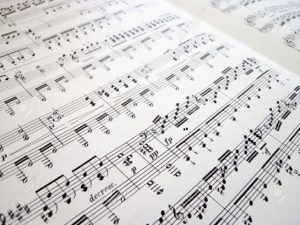
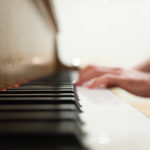
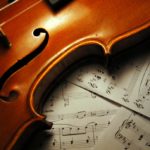
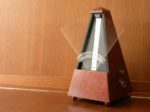
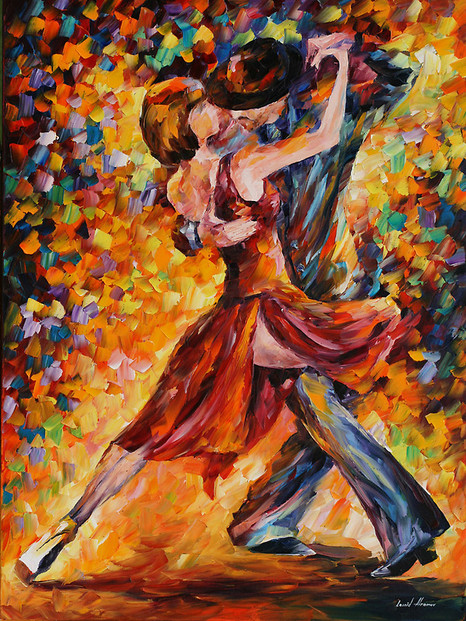
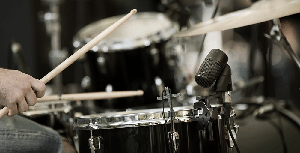

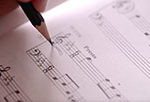
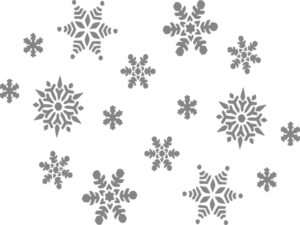
Thanks very much. It was helpful
I’m copying these down by hand and my hand hurts soooo much 😭😂